Powered by solar panels and equipped with the latest technologies, the system remained up even when strong winds crippled mobile services and felled electric poles, writes Jayajit Dash.
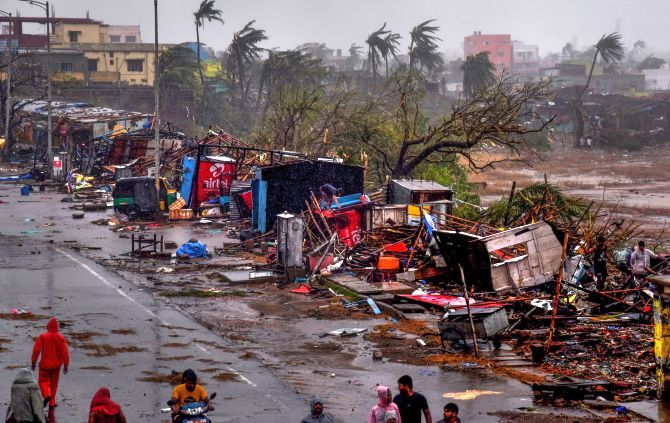
When the extremely severe cyclonic storm Fani was inching towards coastal Odisha in late April this year, the state administration undertook one of the biggest evacuation operations ever conducted in history.
An estimated 1.2 million people were evacuated from vulnerable zones in the state's coastal districts such as Puri and Ganjam, greatly minimising the loss of lives.
Much of this was possible owing to the robust communication network and early warning system that Odisha had set up with the help of engineering major Larsen & Toubro (L&T).
Thanks to L&T's Early Warning & Dissemination System (EWDS), which went live in Odisha in October 2018, officers of the state's disaster management wing could send messages and alerts to vulnerable coastal areas from the State Emergency Operation Centre (SEOC) in Bhubaneswar.
The network also helped them reach out to fish landing centres and cyclone shelters.
Powered by solar panels and equipped with the latest technologies, the system remained up even when strong winds crippled mobile services and felled electric poles.
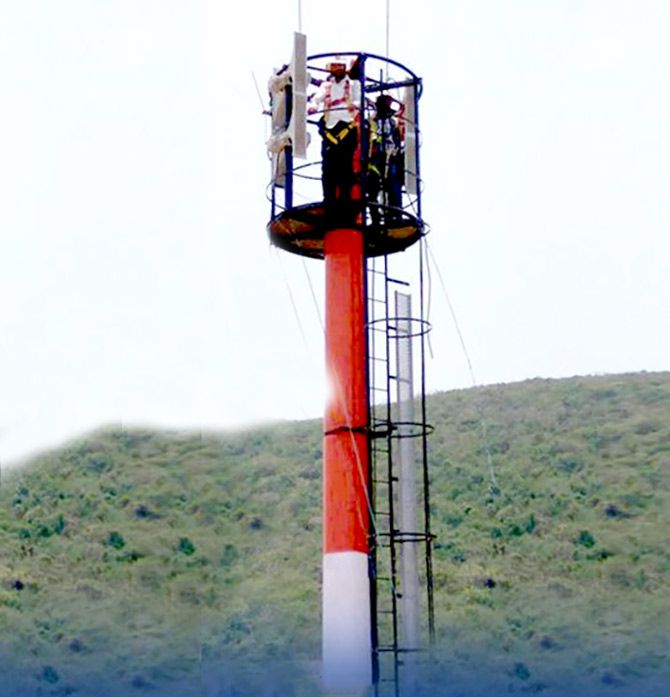
Developed by L&T's Smart World & Communication Unit, EWDS has a unique architecture.
The system leverages several technologies such as Digital Mobile Radio (DMR), Satellite Based Mobile Data Voice Terminal, Mass Messaging System, Alert Tower Siren Systems and Universal Communication Interface which were procured from leading original equipment manufacturers.
For example, the Alert Tower Siren system was obtained from Telegrafia, a Slovakia-based electronic siren company, while Motorola provided the DMR.
The satellite-based Mobile Data Voice Terminal was provided by Denmark's Cobham and the location-based alert system was procured from UMS, Norway.
Before shipping the equipment to Odisha, an L&T team visited the facilities of the OEMs to get the siren system integrated with the DMR and the GSM network.
The user interface was so designed as to make sure that even a person with minimal technical knowledge could operate it.
A third-party network monitoring system was also set up through which all the field elements could be monitored and managed remotely.
"We ensured that the system was fully secure and capable of fulfilling the security requirement as per the IT Act applicable at the time of implementation," said a source at L&T.
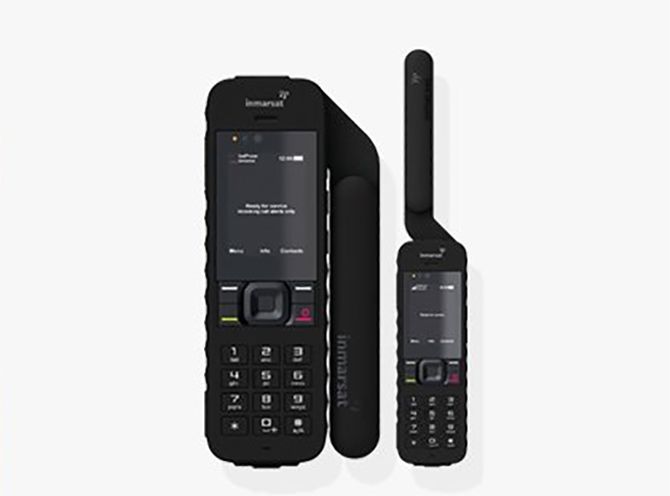
EWDS was deployed across 22 coastal blocks, connecting the State Emergency Operation Centre with six District Emergency Operation Centres, 22 Block Emergency Operation Centres, 14 Fish Landing Centres (FLC), and 113 Cyclone Shelters.
"L&T demonstrated effective deployment of the smart communication technology to avert critical losses of precious lives during a natural calamity of gigantic proportions.
"With the (Odisha) state government apparatus firmly in command, our integrated state-of-the art technology solutions equipped them with useful tools to mobilise resources, inform citizens, monitor the situation and generate just-in-time responses to situations," said S N Subrahmanyan, CEO and Managing Director at L&T.
As many as 122 siren stations were installed along Odisha's 480-km coastline.
Officials at the SEOC used the network to issue cyclone alerts and warnings to everyone located within the range of these stations.
Mobile text messages were transmitted in Odia, Hindi, English, Bengali and Telugu to caution people about the incoming cyclone and how they could safeguard against it.
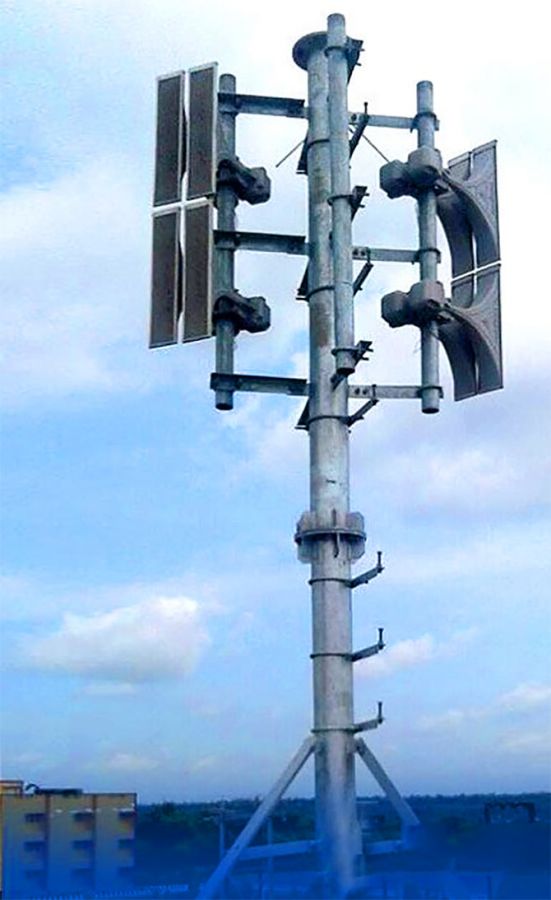
The endpoints in the system are the Alert Siren with Remote Terminal Unit (RTU) situated in areas vulnerable to cyclones.
The speaker horn of Remote Terminal Unit (RTU) is installed on a five-metre pole or 30-metre angular tower or spun concrete tower depending upon the location.
The alerts can be disseminated in the form of a siren sound, prerecorded announcement or a live announcement.
The RTUs receive and decode warning instructions sent from SEOC or BEOC (Block Emergency operation center) via the cellular network (GSM/GPRS) or the VHF network.
On receipt of a valid warning signal the RTU plays the alert signal over a high powered speaker for a pre-determined duration.
"In 1999, Odisha was devastated by a super cyclone.
"At that time, we had no forewarning systems in place.
"Then, in 2013, when our southern coast was ravaged by a very severe cyclonic storm Phailin, we took up a massive evacuation exercise.
"But even then, we lacked the messaging alert system.
"During Fani, 180 million messages were dispatched to people living in vulnerable zones and we know how useful that was," said an Odisha government official.
In fact, the alerts kept being sent even after the evacuation process was over lest someone was stuck in a vulnerable spot.
The last alert was sent just 15 minutes before Fani made landfall near Puri on May 3.
Installing the siren stations had its share of challenges, of course.
"Transporting the towers and other materials to the site was one of the biggest challenges.
"The location's soil condition needed to be studied in advance because a special foundation is required for sustaining the tower at 300 km/hour wind speeds.
"Also, the remote terminal units at the cyclone shelters had to be kept inside IP65 enclosures to protect them from dust and water," company sources said.
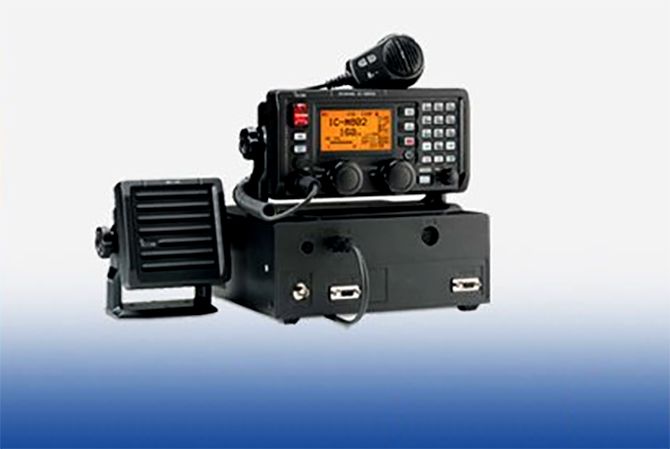
L&T claims that EWDS is one of the best technologies available for saving human lives in the event of a calamitous cyclone.
EWDS is an amalgam of many critical subsystems, one of which is DMR.
At the SEOC, officers can tap it to send the latest updates from the India Meteorological Department to officers stationed at district and block levels.
The DMR system also integrated the VHF radio spectrum at shore stations to communicate with fisherman at sea in order to help them safely reach the shore.
The satellite-based Mobile Data Voice Terminals are the other important component of the EWDS, and critical in times of high-velocity cyclonic storms when cellular networks often go down.
Compact and lightweight, these terminals deliver voice and broadband data connectivity to users via the Inmarsat-4, an advanced satellite telecommunication network owned by the British firm Inmarsat.
The relief commissioner stationed at the Bhubaneswar SEOC leaned heavily on these compact and lightweight terminals as regular telecom services became less and less reliable during Fani.
Each of these terminals allowed up to 11 mobile devices to access voice services and internet during the peak of the cyclone.
EWDS for last mile connectivity is being implemented under Component-A of the World Bank-supported National Cyclone Risk Mitigation project.
It aims at establishing a fool-proof communication system to address the existing gap in the dissemination of disaster warning to the vulnerable community.
Odisha has pioneered its implementation.
The same system is also deployed in Andhra Pradesh whose shoreline is also vulnerable to tropical cyclones.
The cost and budget for entire deployment of EWDS systems hinges on the requirement, scope of work and geography.
Still, the state feels more can be done and the system improved further.
"We still have limitations.
"For instance, the Odisha State Disaster Management Authority is now equipped with 58 satellite phones.
"But they work only when they are aligned with an external antenna.
"We need to put in place a docking system with a fixed antenna to ensure that the phones work indoors.," the government official added.












 © 2025
© 2025